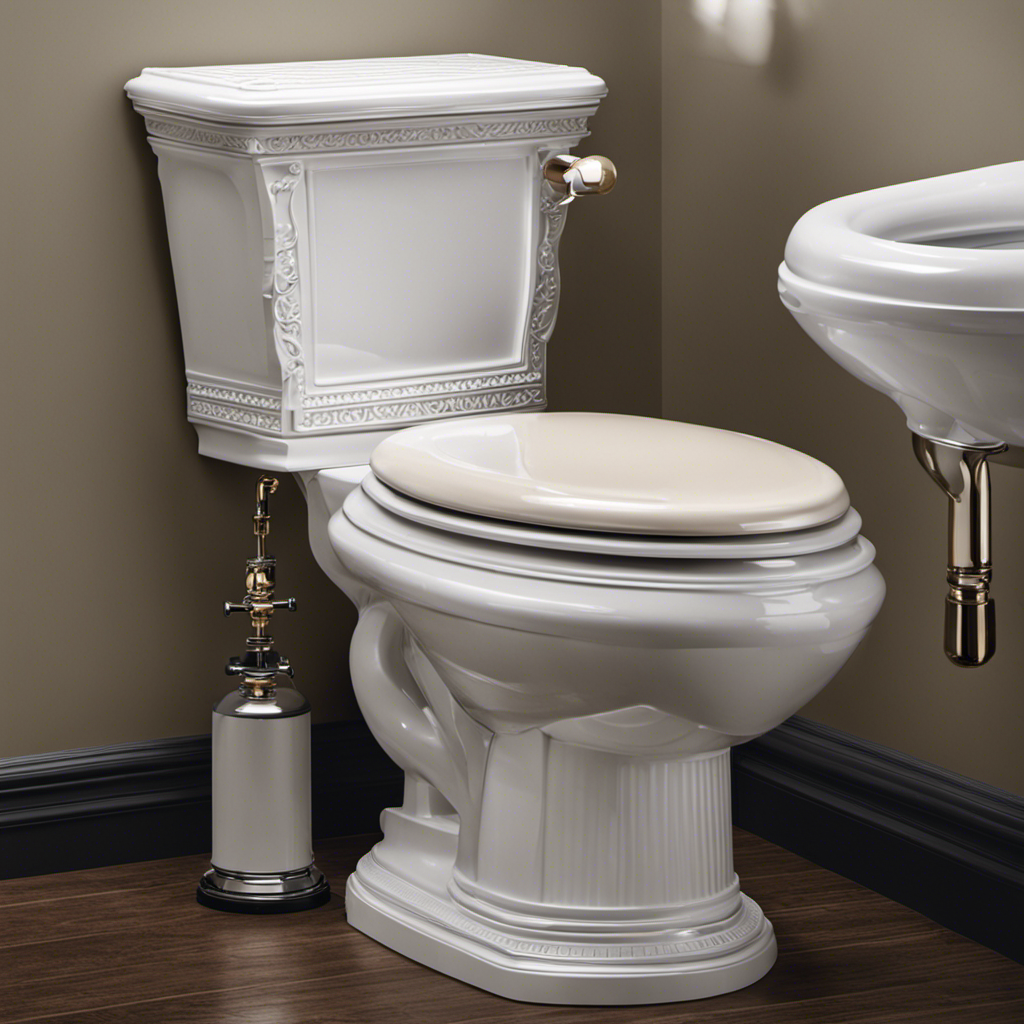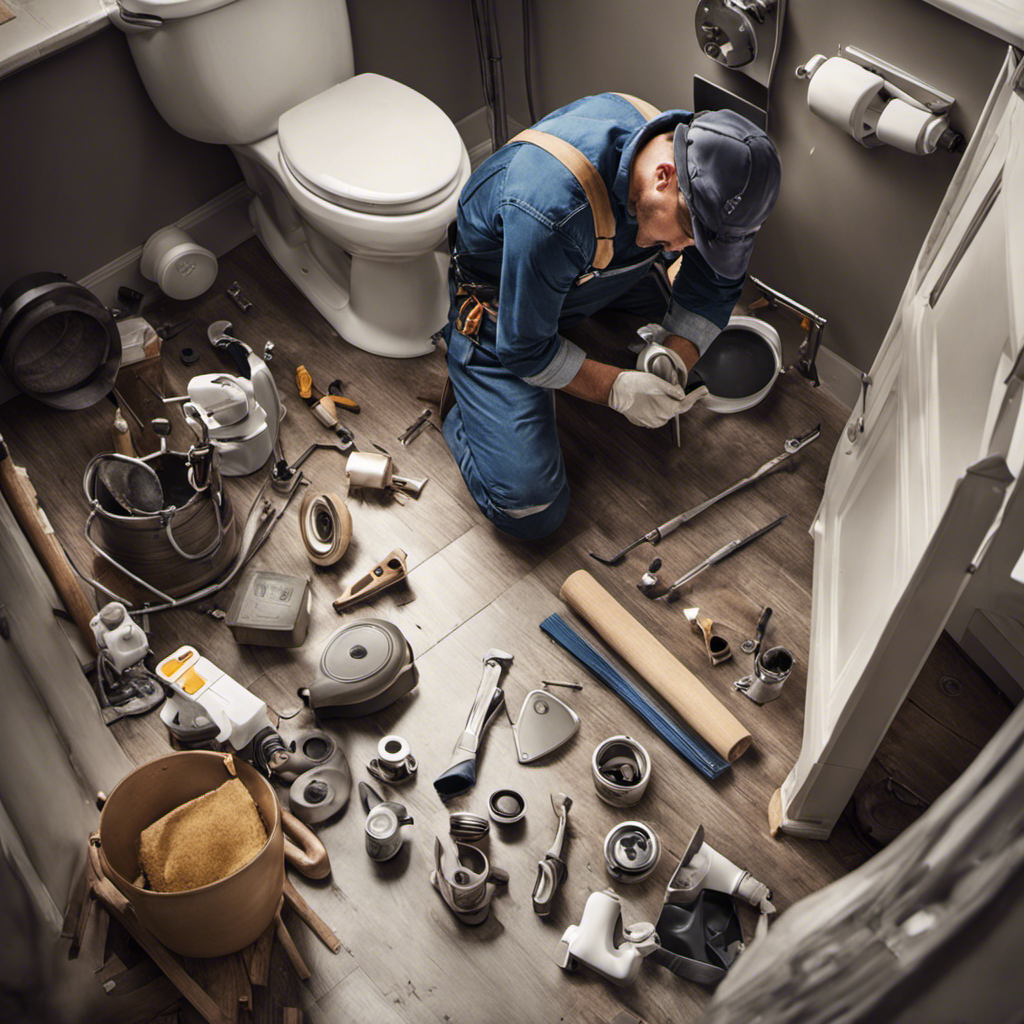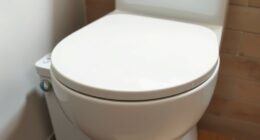Have you ever wondered how a toilet flushes? Well, let me take you on a journey inside the fascinating world of toilet mechanics.
In this article, we’ll explore the intricate anatomy of a toilet flush and unravel the mysteries behind its functioning.
From the flush mechanism to water pressure and the role of the flush valve, we’ll delve into the inner workings of this everyday marvel.
So, fasten your seatbelts and get ready to dive into the depths of toilet engineering.
Key Takeaways
- Regular maintenance is important for preventing common flush problems.
- Malfunctioning components can cause flushing problems and should be identified and resolved.
- Water pressure, the siphoning effect, and gravity all play a role in effectively removing waste during flushing.
- The flush valve is responsible for releasing water into the bowl and should be regularly inspected and cleaned for optimal performance.
The Anatomy of a Toilet Flush
To understand how a toilet flushes, you need to know the anatomy of a toilet. The main components of a toilet flush include the tank, the flush valve, the fill valve, and the handle.
The tank holds the water that is used for flushing. When you press the handle, it lifts the flush valve, allowing the water to flow from the tank into the bowl. The fill valve then refills the tank with water for the next flush.
Proper toilet flush maintenance is important to prevent common flush problems such as weak or incomplete flushes, clogs, or leaks. Regularly checking and cleaning the flush valve, fill valve, and handle can help ensure a smooth and efficient flush every time.
Understanding the Flush Mechanism
You can understand the flush mechanism by examining the components inside the tank.
The toilet flush mechanism is comprised of several key parts that work together to efficiently remove waste from the bowl.
-
Flush handle: This lever is connected to a chain that lifts the flapper, allowing water to flow from the tank into the bowl.
-
Flapper: A rubber valve that seals the bottom of the tank and prevents water from constantly flowing into the bowl.
-
Fill valve: This valve controls the water level in the tank, refilling it after each flush.
Understanding the flush mechanism is important because it can help troubleshoot common toilet flushing problems. Issues like weak flushing, double flushing, or continuous running can often be traced back to malfunctioning components within the flush mechanism. By identifying and resolving these problems, you can ensure a properly functioning toilet.
Now, let’s delve into the role of water pressure in the flushing process.
Water Pressure and the Flushing Process
Water pressure plays a crucial role in effectively removing waste from the bowl during the flushing process. When the flush handle is pressed, water is released from the tank into the bowl with enough force to create a siphoning effect. This siphoning effect, combined with the force of gravity, helps to carry waste away through the drainpipe.
To understand the importance of water conservation in toilet flushing, let’s take a look at the table below:
| Problem | Solution |
|---|---|
| High water consumption | Install a low-flow toilet or a dual flush system |
| Frequent clogging | Use a plunger or a toilet auger to clear the blockage |
| Weak flush | Check the water level in the tank and adjust the fill valve if necessary |
| Continuous running | Replace the flapper valve or adjust the chain length |
The Role of the Flush Valve
The flush valve, located at the bottom of the tank, is responsible for releasing the water into the bowl when the handle is pressed. It plays a crucial role in the flushing process, ensuring that waste is efficiently removed from the toilet bowl.
Function: The flush valve functions by creating a seal that prevents water from entering the bowl, allowing the tank to fill. When the handle is pressed, the flush valve opens, allowing the water to rush into the bowl and create a siphon effect that carries away waste.
Types of Flush Valves: There are two main types of flush valves – flapper valves and canister valves. Flapper valves are rubber seals that lift when the handle is pressed, allowing water to flow into the bowl. Canister valves, on the other hand, use a plastic or rubber seal that lifts vertically to release water.
Maintenance: To ensure proper functioning, it is important to regularly inspect and clean the flush valve. Check for any signs of damage or wear, such as cracks or leaks, and replace if necessary. Cleaning the valve and ensuring it is free from any debris or mineral buildup will help maintain its optimal performance.
How the Siphon Action Works
When the handle is pressed, the flush valve opens to create a siphon effect that carries away waste from the toilet bowl. Gravity powered flushing is the key to this process. As the flush valve opens, water rushes down from the tank into the bowl. This sudden rush of water creates a high velocity flow, which in turn creates a low pressure area in the siphon tube. The low pressure sucks the waste and water out of the bowl and into the sewage system. The siphon action is heavily influenced by the water level in the toilet bowl. If the water level is too low, the siphon effect may not be strong enough to carry away all the waste. On the other hand, if the water level is too high, it may hinder the siphon action by preventing the creation of the necessary low pressure zone.
To illustrate the impact of water level on the siphon action, here is a table:
| Water Level in Bowl | Siphon Action |
|---|---|
| Too Low | Weak |
| Optimal | Strong |
| Too High | Hindered |
Frequently Asked Questions
How Often Should I Replace the Flush Mechanism in My Toilet?
I replace the flush mechanism in my toilet every 5-10 years. Signs of a faulty flush mechanism include weak flush, constant running, and water leakage. Regular toilet flush maintenance helps prevent problems.
Can I Increase the Flushing Power of My Toilet by Adjusting the Water Pressure?
Yes, you can increase the flushing power of your toilet by adjusting the water pressure. However, it is important to note that excessive water pressure can cause damage. If you’re experiencing a weak flush, try adjusting the water level or using a plunger.
Is It Normal for My Toilet to Make a Loud Noise During the Flushing Process?
Yes, it is normal for a toilet to make a loud noise during the flushing process. This noise can be caused by factors such as water pressure adjustment, which affects the speed and force of the flush.
How Can I Prevent My Toilet From Clogging?
To prevent toilet clogging, regularly maintain the toilet flapper by checking for damage or debris. If a clog does occur, use a toilet plunger to create pressure and dislodge the blockage.
Are There Any Eco-Friendly Options Available for Toilet Flush Systems?
There are eco-friendly options for toilet flush systems. Water saving technology and alternative flush options help conserve water. These innovations are designed to reduce water usage without compromising flushing performance.
Conclusion
After dissecting the intricate workings of a toilet flush, it’s clear that this seemingly mundane mechanism is nothing short of a marvel. With an unparalleled ability to generate water pressure and harness the power of siphon action, the toilet flush is a force to be reckoned with.
Its flush valve, like a gatekeeper, ensures the smooth flow of water, while the siphon action efficiently clears away waste.
Truly, the toilet flush is a testament to human ingenuity and engineering prowess, leaving us in awe of its remarkable capabilities.










